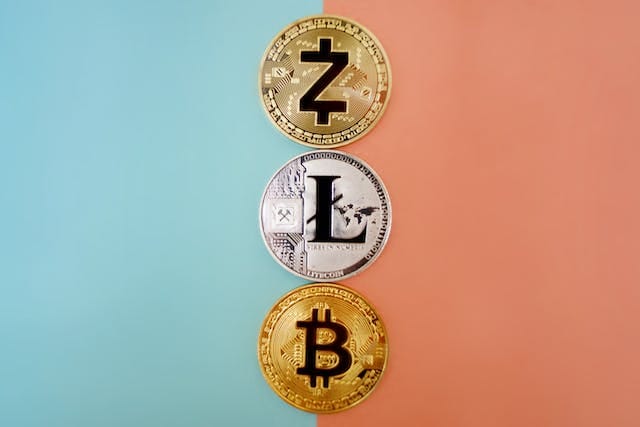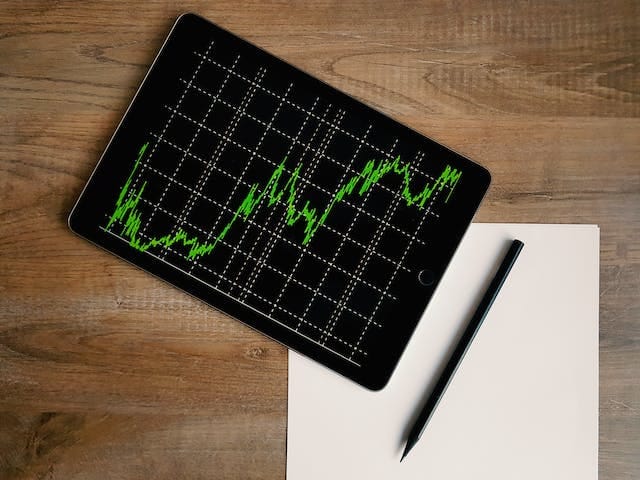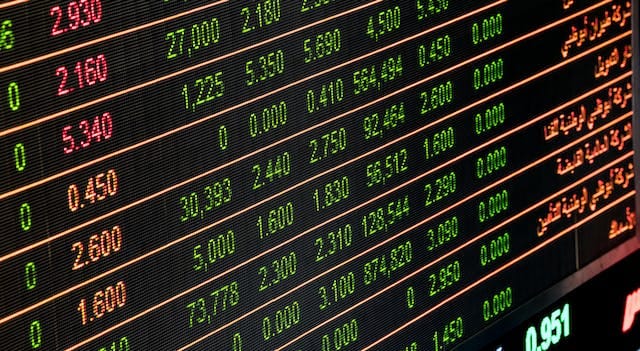Insider Trading and Asset Pricing | Navigating the Impact of Information
Explore the intricate dynamics of insider trading and asset pricing, delving into theories, legal implications, case studies, and strategies to navigate information asymmetry. Understand the impact in the digital age and anticipate future trends in finance

Asymmetry
As I delve into the complex world of finance, I find myself constantly intrigued by the intricate relationship between insider trading and asset pricing. The concept of information asymmetry has a profound impact on the financial markets, influencing the valuation of assets and shaping investment decisions. In this article, I aim to explore the multifaceted dynamics of insider trading and asset pricing, shedding light on the theories, implications, and strategies associated with this critical aspect of the financial realm.
Understanding Insider Trading and Asset Pricing
Insider trading, often portrayed in a negative light, refers to the buying or selling of securities by individuals with non-public, material information about a company. This privileged information can significantly affect the valuation of the company's stock and other assets, creating an imbalance in the information available to different market participants. Asset pricing, on the other hand, involves the determination of the value of financial securities based on various factors such as risk, return, and market conditions.

The interplay between insider trading and asset pricing becomes evident when insiders utilize their exclusive knowledge to make profitable trades, thereby distorting the true value of the assets. This asymmetric flow of information can lead to mispricing of securities, ultimately impacting the efficiency and fairness of the financial markets. As I embark on this exploration, I am keen to unravel the intricate mechanisms that underpin this phenomenon and its ramifications on the broader financial landscape.
The Impact of Information Asymmetry on Asset Pricing
Information asymmetry, a cornerstone of insider trading, exerts a profound influence on asset pricing. When insiders possess undisclosed information that is pertinent to the valuation of assets, it creates a disparity in knowledge among market participants. This knowledge gap can lead to misjudgments in asset pricing, as the market may not fully reflect the true intrinsic value of the securities. Consequently, this can result in suboptimal investment decisions and distortions in the allocation of capital within the economy.
Moreover, the impact of information asymmetry extends beyond individual securities and can permeate entire markets, leading to volatility and inefficiencies. As I reflect on the implications of this phenomenon, I am struck by the far-reaching consequences it has on the allocation of resources and the overall functioning of financial systems. It is clear that addressing information asymmetry is crucial in fostering transparency and integrity in asset pricing, laying the groundwork for a more robust and equitable financial environment.
Theories and Models Related to Insider Trading and Asset Pricing
In the realm of finance, various theories and models have been developed to elucidate the complexities of insider trading and asset pricing. The seminal work of economists and scholars has contributed to a deeper understanding of these concepts, providing frameworks for analyzing the behavior of market participants and the dynamics of asset valuation. From the seminal insights of the Efficient Market Hypothesis to the nuanced models of information cascades and herding behavior, the theoretical underpinnings of insider trading and asset pricing offer a rich tapestry of perspectives.
One such model, the Capital Asset Pricing Model (CAPM), seeks to quantify the relationship between risk and expected return, offering valuable insights into the pricing of risky assets in the presence of insider trading. Additionally, behavioral finance theories shed light on the irrational behaviors exhibited by market participants in response to asymmetric information, challenging traditional notions of market efficiency. As I delve into these theories and models, I am reminded of the intricate balance between rationality and irrationality in the realm of finance, underscoring the multifaceted nature of insider trading and asset pricing.
The Legal and Ethical Implications of Insider Trading
The intertwining of legal and ethical considerations in the context of insider trading underscores the complexities inherent in this practice. From a legal standpoint, insider trading is regulated by stringent laws and regulations aimed at curbing the misuse of privileged information for personal gain. The Securities and Exchange Commission (SEC) in the United States, for instance, enforces strict guidelines to prevent insider trading and maintain the integrity of the financial markets. Ethically, the practice of insider trading raises profound questions about fairness, transparency, and the fiduciary responsibilities of market participants.

The ethical dimensions of insider trading extend to corporate governance and the duty of company insiders to act in the best interests of shareholders. The breach of trust resulting from insider trading not only undermines market confidence but also erodes the ethical fabric of the financial industry. As I contemplate these ethical quandaries, I am reminded of the delicate balance between legality and morality, and the imperative of upholding ethical standards in the pursuit of financial prosperity.
Case Studies on Insider Trading and Its Effects on Asset Pricing
Examining real-world case studies provides invaluable insights into the tangible impact of insider trading on asset pricing. Notable instances such as the Enron scandal and the Martha Stewart case serve as cautionary tales, illustrating the far-reaching consequences of illicit insider trading activities. These cases reveal the erosion of investor trust, the devaluation of assets, and the legal repercussions that ensue from engaging in unlawful insider trading practices.
Furthermore, the effects of insider trading on asset pricing can be observed across a spectrum of industries, from technology and healthcare to finance and energy. The revelation of insider information, whether through corporate disclosures or regulatory investigations, often triggers significant fluctuations in asset valuations, highlighting the pervasive influence of information asymmetry. Through these case studies, it becomes evident that the repercussions of insider trading reverberate throughout the financial markets, underscoring the need for vigilance and regulatory oversight.
Strategies to Navigate Information Asymmetry in Asset Pricing
In light of the pervasive impact of information asymmetry, market participants are compelled to devise strategies to navigate this challenging terrain. From the perspective of investors, conducting thorough due diligence and fundamental analysis can mitigate the risks associated with mispriced assets resulting from insider trading. Diversification of investment portfolios and the incorporation of risk management techniques serve as additional safeguards against the adverse effects of asymmetric information.
Moreover, the implementation of robust compliance and monitoring mechanisms within organizations can mitigate the likelihood of insider trading occurrences. By promoting a culture of transparency and ethical conduct, firms can fortify their defenses against the misuse of privileged information. Embracing technological solutions such as blockchain and encryption also holds promise in enhancing the security and transparency of information, thereby mitigating the adverse effects of information asymmetry on asset pricing.
Regulatory Measures to Address Insider Trading
Regulatory authorities play a pivotal role in addressing the challenges posed by insider trading through the implementation of stringent measures and enforcement mechanisms. The promulgation of insider trading laws, coupled with the establishment of regulatory bodies tasked with overseeing market conduct, serves as a bulwark against illicit activities. By imposing penalties for violations and fostering a culture of compliance, regulators seek to uphold the integrity and fairness of financial markets.
Furthermore, the advent of sophisticated surveillance technologies and data analytics has empowered regulatory agencies to detect and deter insider trading with greater precision. The collaboration between global regulatory bodies to harmonize standards and share information has further bolstered the collective effort to combat insider trading on a global scale. As I contemplate the role of regulation in mitigating information asymmetry, I am cognizant of the pivotal role it plays in maintaining the equilibrium of financial markets and safeguarding investor interests.
Insider Trading and Asset Pricing in the Digital Age
The advent of the digital age has ushered in a new era of complexities and opportunities in the realm of insider trading and asset pricing. The proliferation of electronic trading platforms and the instantaneous dissemination of information have transformed the dynamics of market interactions, presenting both challenges and advancements. The rise of algorithmic trading and high-frequency trading has introduced new dimensions of speed and complexity, exerting an impact on asset pricing dynamics in the presence of asymmetric information.
Moreover, the emergence of alternative data sources and machine learning algorithms has redefined the landscape of information analysis and decision-making, offering novel avenues for uncovering hidden patterns and signals in asset pricing. However, the digital age also brings forth concerns regarding data privacy, cybersecurity, and the potential for technological vulnerabilities to be exploited for insider trading purposes. As I ponder the implications of the digital revolution on insider trading and asset pricing, I am mindful of the imperative to adapt to the evolving landscape while safeguarding the integrity of financial systems.
Future Trends in Insider Trading and Asset Pricing
Looking ahead, the future of insider trading and asset pricing is poised to be shaped by an array of evolving trends and dynamics. The increasing interconnectedness of global financial markets, coupled with the proliferation of digital platforms, is likely to engender new challenges in managing information asymmetry. The integration of artificial intelligence and advanced analytics into investment strategies holds the promise of enhancing market efficiency, yet it also introduces complexities in discerning the veracity of information.
Furthermore, the regulatory landscape is anticipated to witness continued evolution in response to emerging forms of insider trading and technological advancements. The quest for greater transparency and fairness in asset pricing is expected to drive regulatory reforms and collaborative efforts among international regulatory bodies. As I contemplate the future trajectory of insider trading and asset pricing, I am cognizant of the imperative to embrace innovation while upholding the foundational principles of integrity and ethical conduct.
In conclusion, the intricate interplay between insider trading and asset pricing underscores the profound impact of information asymmetry on the financial markets. From the theoretical underpinnings to the legal and ethical considerations, the ramifications of insider trading permeate the fabric of financial systems, necessitating vigilance and proactive measures to safeguard market integrity. As we navigate the complexities of the digital age and anticipate future trends, the imperative of fostering transparency, fairness, and ethical conduct remains paramount in shaping the trajectory of insider trading and asset pricing. By embracing a holistic approach that encompasses regulatory vigilance, ethical stewardship, and technological innovation, we can aspire to cultivate a financial landscape that upholds the principles of equity, integrity, and prosperity.
If you found this article insightful, consider exploring further topics on finance and economics to deepen your understanding of the intricate dynamics shaping the global markets.




